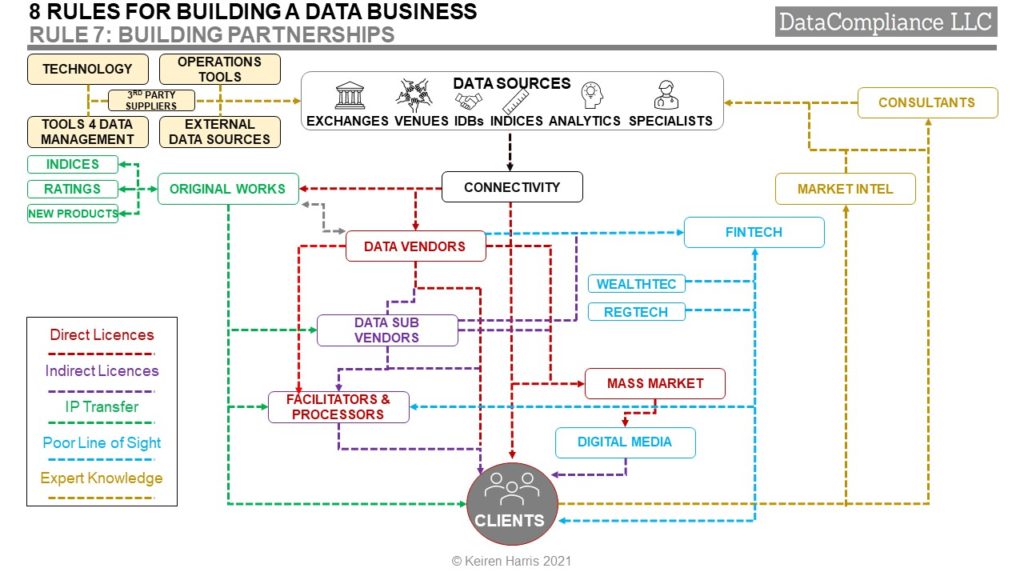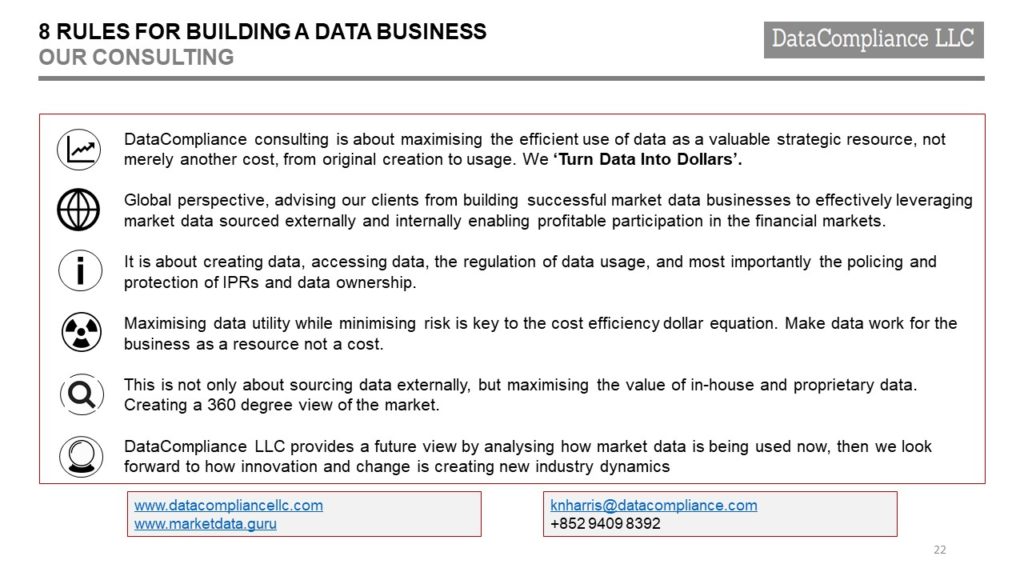Rule 7 Objective: No data business is completely standalone, so partnerships must be utilised to provide resources, reach, and presence that would otherwise be either unavailable or prohibitively costly
Why? All market data business require partners across the data workflow from the largest to smallest, though working with partners can be more like herding cats than Geryon’s cattle. A data business cannot do everything themselves, for instance Telecom companies like BT Radianz, Savis and TNS provide connectivity, Bloomberg outsources reference data operations to WIPRO, many data businesses use accounting and client management tools from DataBP. The list goes on. Each partner fits into the data value chain and interacts in different and often multiple ways with the data business.
Naturally all have their own specific agendas and objectives which very rarely, exactly coincide, however all bring their own distinct value without which the data business would never be as successful.
The Key factors are:
• Understanding the value chain with the role each partner undertakes
• Technology and connectivity partnerships. Making sure technology delivers
• Sourcing partnerships. Who supplies what and at what cost?
• Distribution and sales partnerships. Vendors, sub-vendors, facilitators, ISVs and others. The force multipliers
• Value add partners, the creators of new IP based upon the source’s own underlying data, this includes indices, benchmarks, derived data, new financial products, and original works
• Client partnerships. The myriad types of end users, the people who turn data into dollars
• Consulting partnerships. Expertise is another force multiplier
Building the Partnership flow diagram:

Rule 7 Future Development
Of all the 8 rules, in many ways the Rule 7 presents the biggest challenge for the future because as the data environment evolves, relationships adjust, and their perceived value to each party alters in a wide range of ways from subtly to dramatically, slowly to quickly. The knock-on effects can be equally diverse, more appropriate partnerships for either party may emerge, IPRs and contractual obligations change, the partners’ own clients are never a constant, and technology often acts as a disintermediator.
Then there is the biggest, and all too often ignored, X-Factor of them all, people. Contrary to popular opinion, business people do have emotions, do not always take logical decisions, and in the data industry this can be the catalyst for ‘Murphy’s Law’.
Yet successful partnerships are common in data, Tullett Prebon and Refinitiv springs to mind, but they need to be managed.
How?
• All partners must buy in to Rule 3, ‘Value your data’ with respect to the maintenance of data integrity based upon ‘Accuracy, Completeness, Consistency, and Timeliness’
• Continuously justify the partnership to ensure it remains beneficial to all parties
• Maintain the dialogue and never avoid problems. In data this is just not possible because as data flows downstream, issues tend to get magnified, and when they impact billion dollar capital markets, expect more than merely irate data consumers
• Audit Trail. Document everything, maintaining easy access to complete contract information and documentation
• Clear line of sight on how the data flows from source to end users defines the relationships
• Keep strictly to core IPR principles, implement effective control, monitoring, and reporting of market data usage
Getting Rule 7 right expands market reach and act as business multipliers
Rules 7 & Summary to come!
Keiren Harris 23/03/2021
Please email knharris@marketdata.guru for a pdf or information about out consulting services


